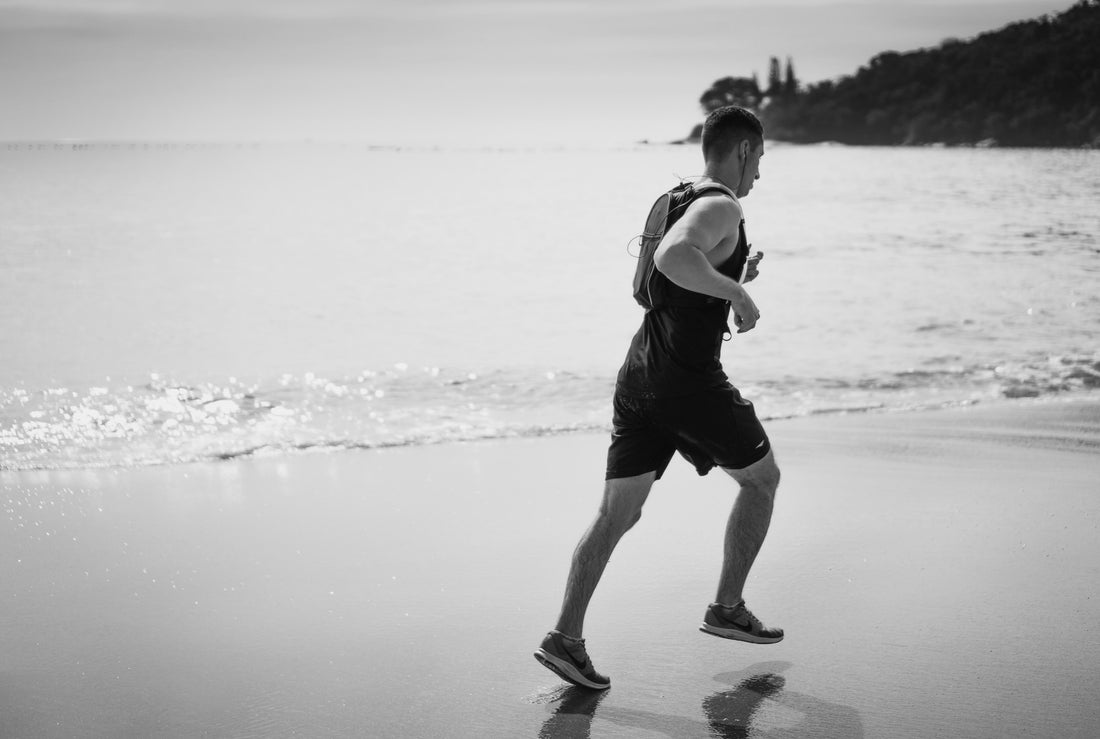Do you feel tight in your calves after a long walk or run?
This can be due a buildup of tension, or trigger points in your calf muscles, and is a common presentation in our Physiotherapy clinic.
THE CALF

The calf muscle is a name given to a group of muscles of the back part of the lower leg – namely the gastrocnemius and soleus muscles. They connect your shin bones to your ankle bones, via the Achilles Tendon.
The job of these muscles is to point the foot downwards, but also to provide propulsion as we load up the front of our foot in walking and running.
Other than just “feeling” tight, a tight calf muscle they can also contribute to many forms of hip, knee, ankle and foot pain such as:
- Patello-femoral pain
- Patella Tendinopathy
- Groin Pain
- Achilles Tendinopathy
- Back Pain
The good news is that there are several different ways as Physiotherapists that we can treat tight calf muscles, and help get you back to normal function as soon as possible.
These include:

|
FOAM ROLLING These are cylindrical foam rolls that come in different degrees of firmness and design. Rollers have become increasingly popular in recent times and are used by many athletes for relief of tight muscles and treatment of trigger points. This is achieved by rolling the tight muscle over the roller, the effects are seen to be similar to a deep tissue massage.
|

|
DRY NEEDLING Dry Needling is the western world’s version of acupuncture (a key component of traditional Chinese medicine). Dry needling involves placing small needles into parts of the muscle that have become fatigued and shortened in length. Placing needles into these points allows the muscle to reduce their tension and to relieve pain.
|

|
MASSAGE Massage has been used for decades to treat tight calves as well as other muscles. There are many different types of massage, two commonly used include remedial (more relaxing) and deep tissue massage (firmer). Massage allows increased blood flow to the area which can help move away lactic acid and relieve tight cramped muscles.
|

|
STRETCHING Stretching, like massage, stretching has been a common practice in Physiotherapy clinics around the world for years. There are many different ways to stretch a tight muscles and this often leads to relief of painful tired areas. To Stretch your calf muscles – lean your hands against the wall in a lunge position. Keep your back heel on the ground and lean towards the wall. Hold for 20-30 seconds. Then repeat this stretch, but this time bend the back knee to target the soleus muscle. Repeat this on both sides, a few times for each stretch.
|

|
BIOMECHANICS Biomechanics refers the study of how the body moves and functions. Often with tight calves there can be underlying biomechanical issue that is causing the calf to become shortened in length. This may be caused by lack of mobility in the ankle or other issues causing the muscles to either remain shortened or fatigue quickly when carrying out day to day activities. |
At Leading Edge Physiotherapy we are lucky to be able to have access to The Biomechanics Lab – state of the art Biomechanical Testing Equipment that records and analyses the way you walk and run to help pinpoint the exact problem.
If you’re not sure why you’re getting a tight calf – Chris and his team at The Biomechanics Lab can give you an exact answer.
So whether you need to have your calf loosened off with the techniques we mentioned above, or you’re keen to get an your running style analysed, the Leading Edge team have the knowledge, equipment and skills to rid you of your calf tightness and get you back to your best.
So if you have tight calves from running, then CONTACT US now to arrange an appointment to have your tight calves looked at, or you can even BOOK ONLINE on our online booking system.

